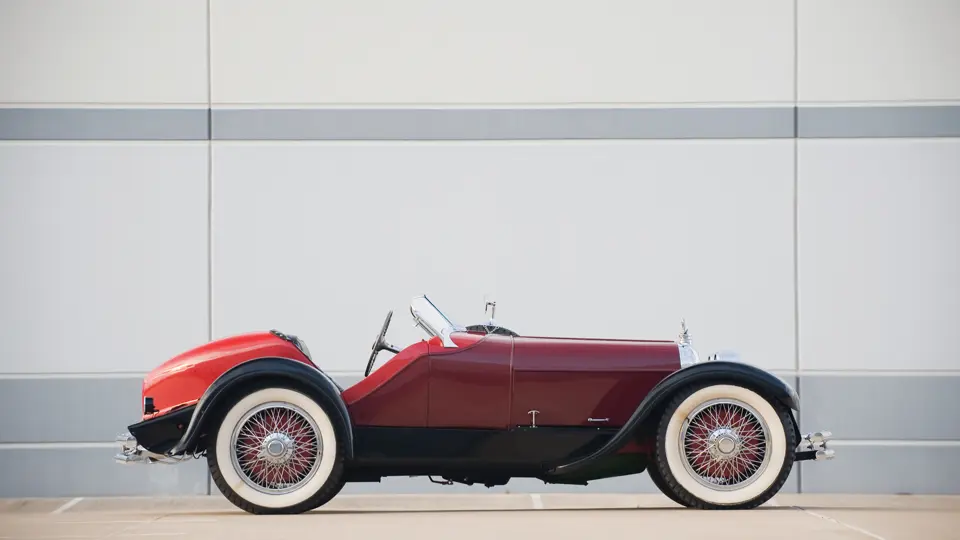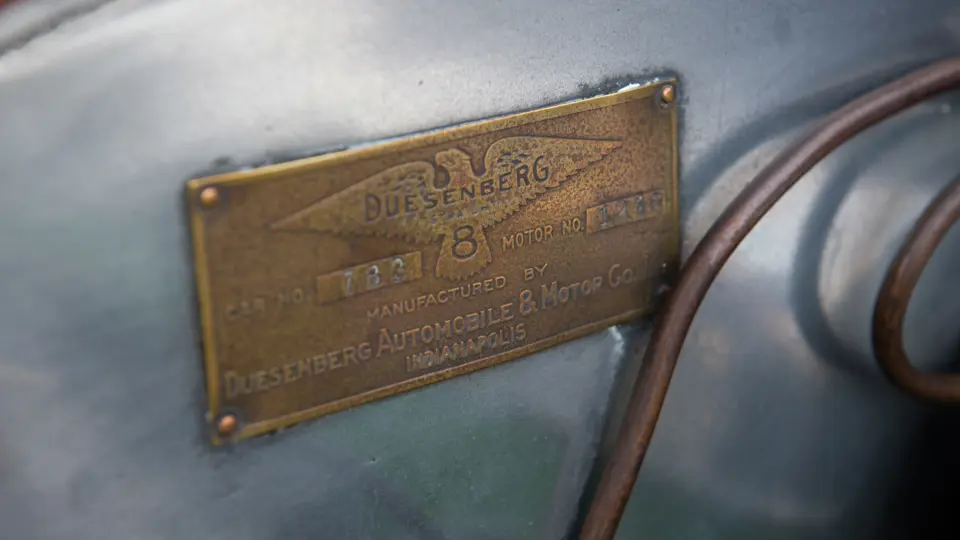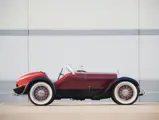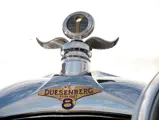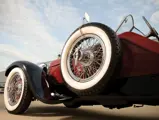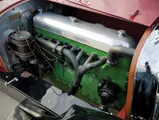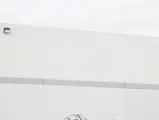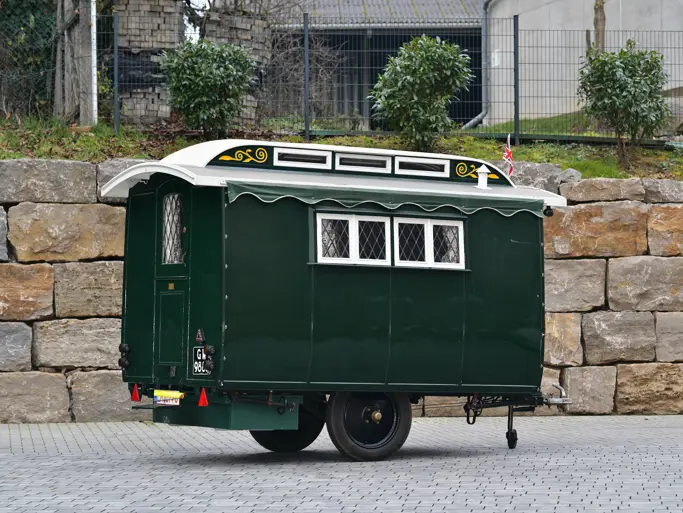88 bhp, 260 cu. in. SOHC inline eight-cylinder engine, three-speed manual transmission, tubular front axle, live rear axle, longitudinal semi-elliptic leaf springs, and four-wheel hydraulic brakes. Wheelbase: 105 in.
During the “junk formula” years of the Indianapolis 500, when rules were skewed towards cars built with modified production engines, some surprising privateers jumped into the fray. Among these figures was a successful auto garage and parking lot owner from New York, Benjamin “Benny” Brandfon. Brandfon’s early racing adventures included ownership of a 1913 Peugeot, which survived to become a treasured part of the D. Cameron Peck, Briggs Cunningham, and, finally, Miles Collier collections, as well as the construction of a homebuilt special, which employed a Sunbeam engine and Mercedes chassis.
In the late 1920s Brandfon acquired an original Duesenberg Model A touring car, chassis number 783, with the goal of building out of it a racing car to run at Indy. The frame was cut at the front and reshaped, the engine was fitted with a single large Zenith carburetor (soon replaced with two downdraft Winfield carburetors) and a magneto ignition, and a new racing body was built. The car was taken to Indianapolis for the 1931 running of the 500, and in practice, with its creator at the wheel, it ran at 101 mph, which was very competitive among that year’s field. It did not qualify, however, and while he did run it at more minor East Coast races during the 1930s, he never made another attempt at entering the 500. The idea of what might have been is absolutely tantalizing.
Brandfon’s Duesenberg Indy Car languished through the early post-war years, until, in the early 1950s, its now-retired owner took on the project of converting his onetime Brickyard competitor into a street machine. The original “boattail” of the racing body was retained, but the sleekly curved fenders were borrowed from an early Jaguar, along with the radiator from a Cord L-29 and the windshield from an MG. The hood was made from scratch out of sheet aluminum, while the original Model A Touring’s cowl remained. The engine was converted back to standard coil and distributor ignition, but otherwise, the car’s mechanical components remained unchanged from how they had run at Indy.
In this form, the Brandfon Duesenberg continued to be tinkered with for the remainder of its owner’s life. In 1966 he was interviewed by noted historian Karl Ludvigsen for the ACD Club Newsletter, where he discussed his continued mechanical work on the car, as well as his desire never to sell it, but rather to pass it on to his son, stating that “this old car keeps me alive.”
The car did, indeed, pass into the care of Sasha Brandfon, who continued the family business in New Haven, Connecticut. It was offered for sale in 1967, passing out of the Brandfon family and beginning its life as a collector’s item, which has continued through the ownership of several noted enthusiasts in the American South and West.
As presented today, the car has been slightly modified from its final Brandfon configuration: a stock Duesenberg Model A radiator shell and Warner-Patterson headlamps have been installed, the bulky convertible top once fitted has been removed, and a more appropriately dashing Auburn Speedster windshield has been fitted. The body wears a striking two-tone burgundy, which serves to set off its design quite nicely, with black fenders and black leather upholstery in the suitably spartan interior. Other accessories include a Motometer, a European-style leaf-spring-spoked steering wheel, 20-inch chrome wire wheels with knock-off hubs, wide whitewall tires, biplane-style tubular chrome bumpers, and dual taillights. The car, wearing a restoration believed to date back some 30 years, displays appropriate cracking to the lacquer finish, which adds to this fascinating special’s aura of having been regularly enjoyed.
Of the numerous Duesenberg “race cars” in existence, this dual-personality runabout has to be among the most engaging. It combines the legendary engineering of the Model A Duesenberg with the skills of a man whose mechanical abilities went far beyond “shade tree.” It once ran competitively against the best the world had to offer, and in its retirement years it became a sophisticated art project, the results of which rival the most flamboyant custom coachwork of the Classic Era.
Benny Brandfon’s beloved car might not have kept him alive forever, but it’s safe to say that he had a lot of fun while it lasted.




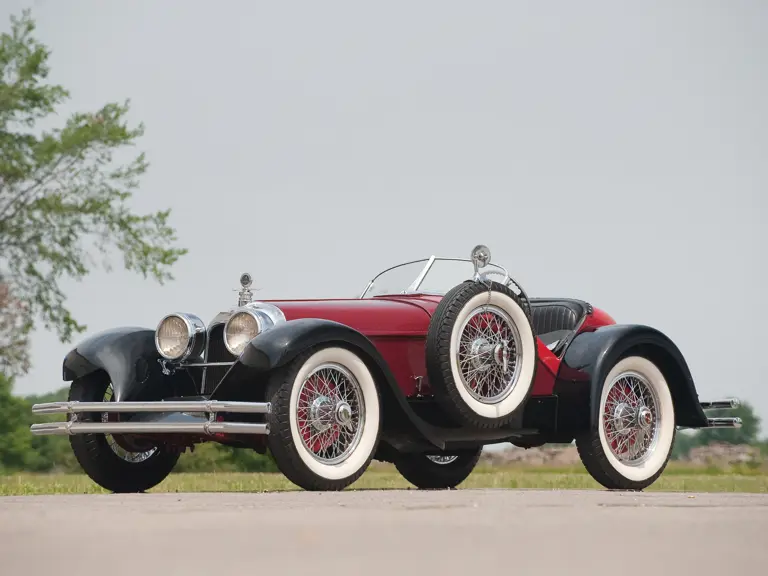
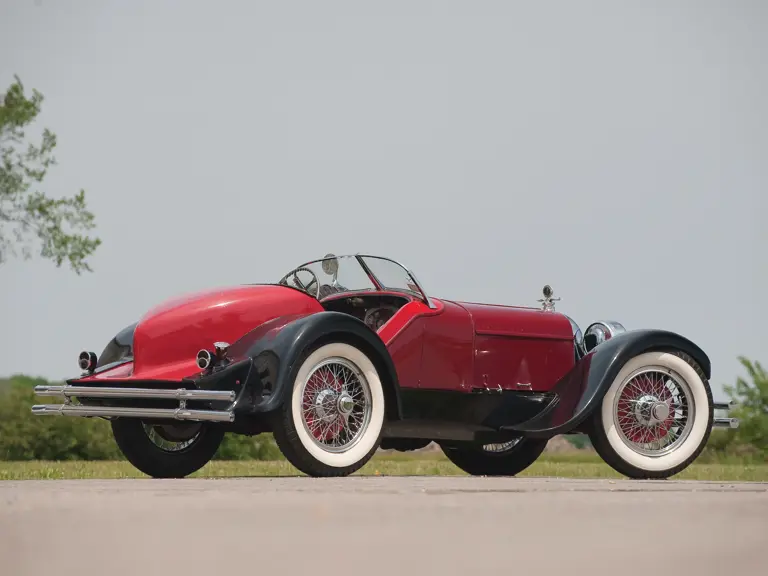
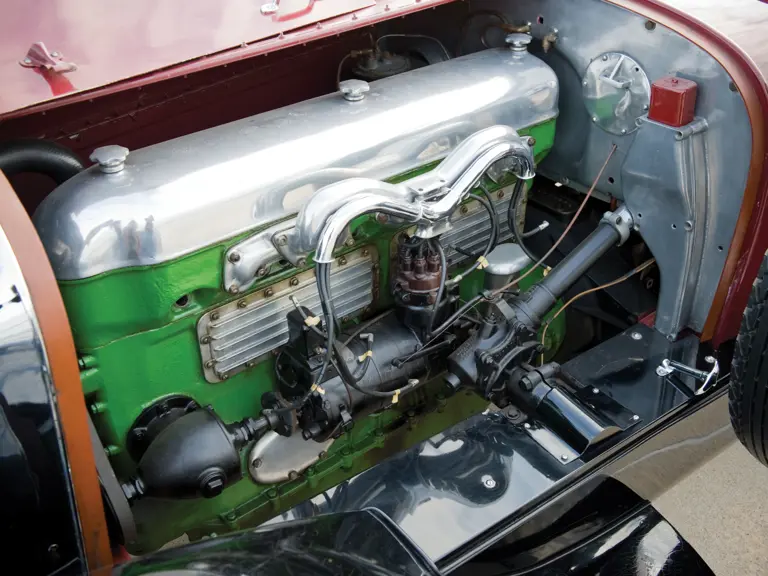
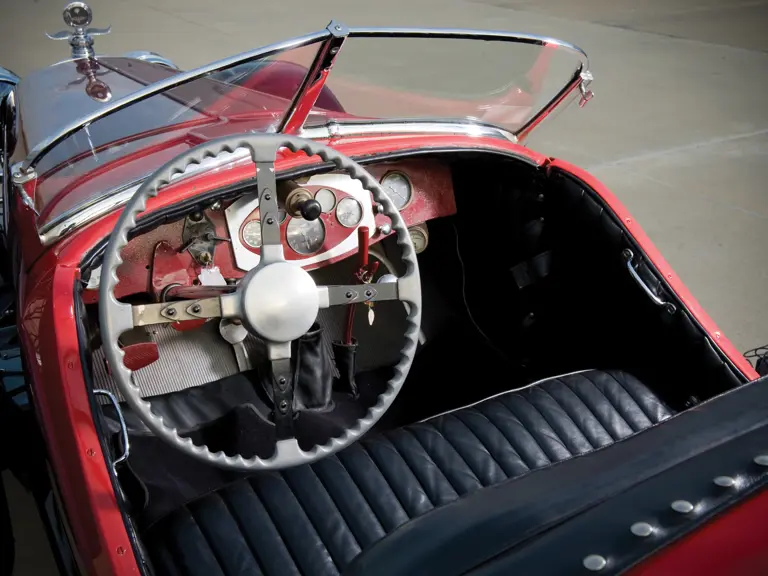


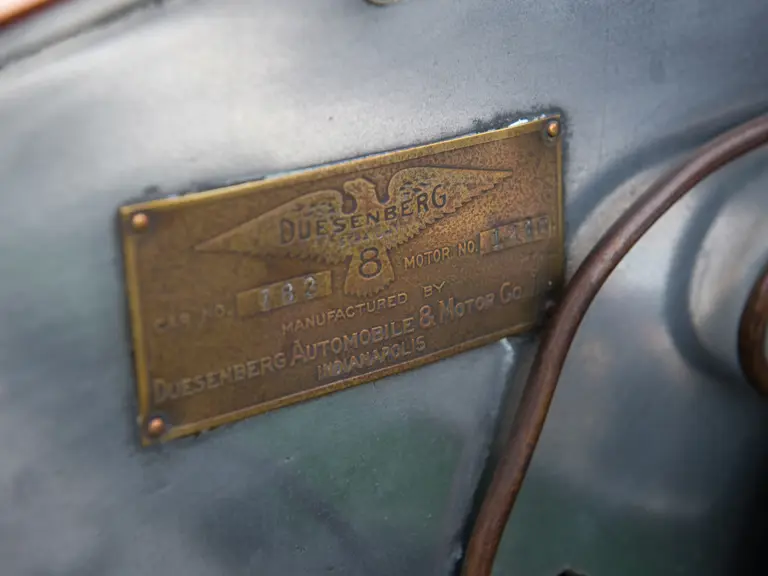

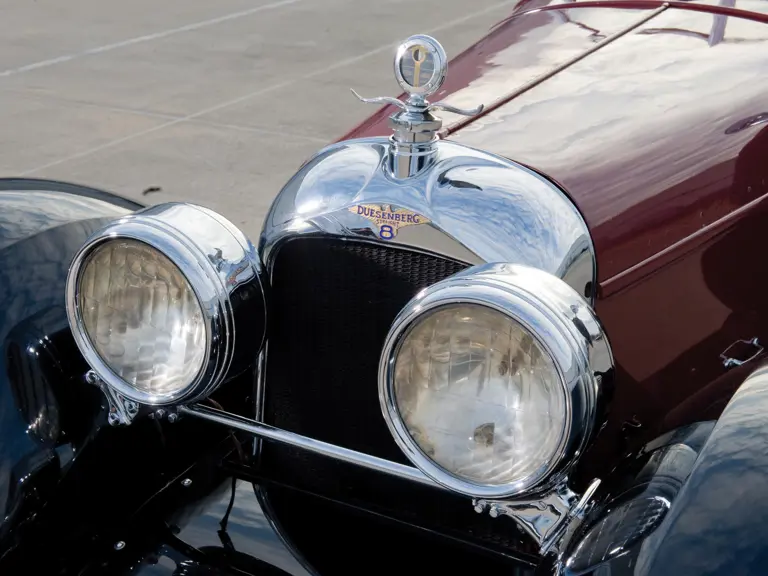

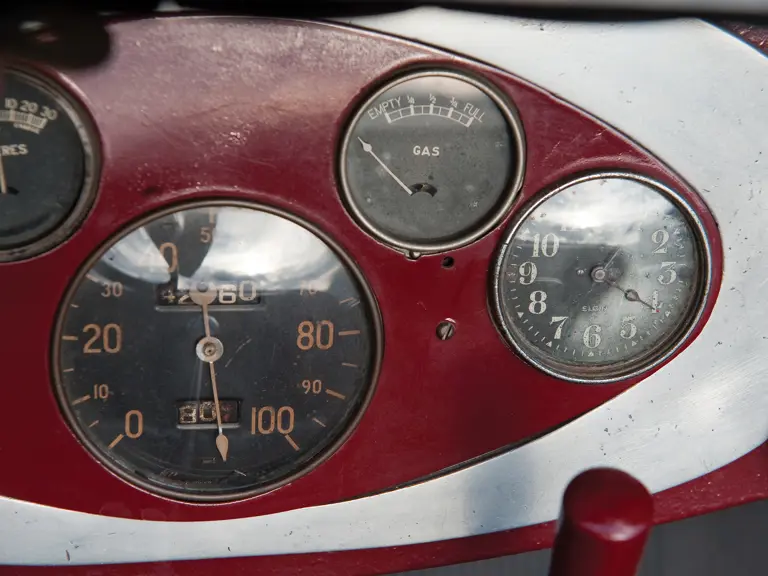
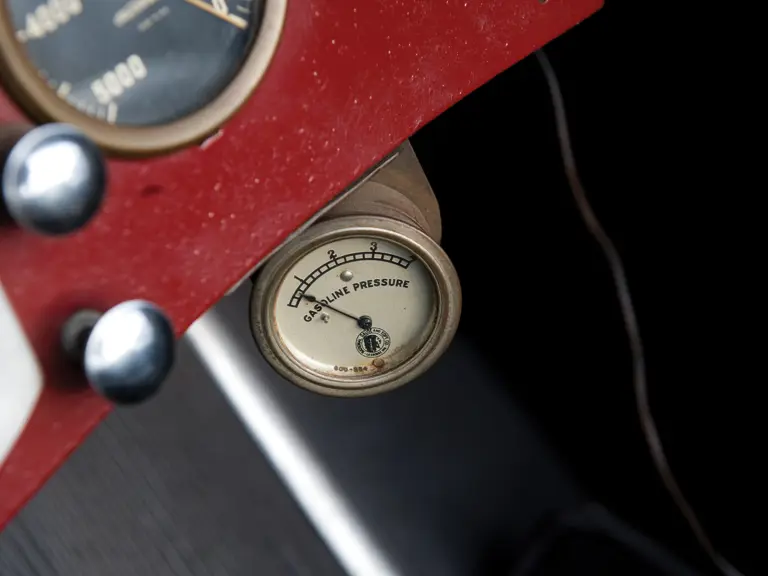

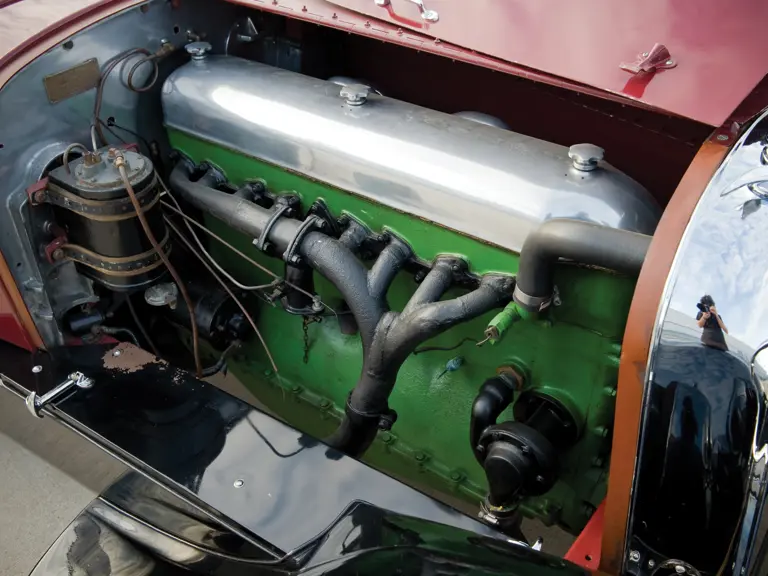
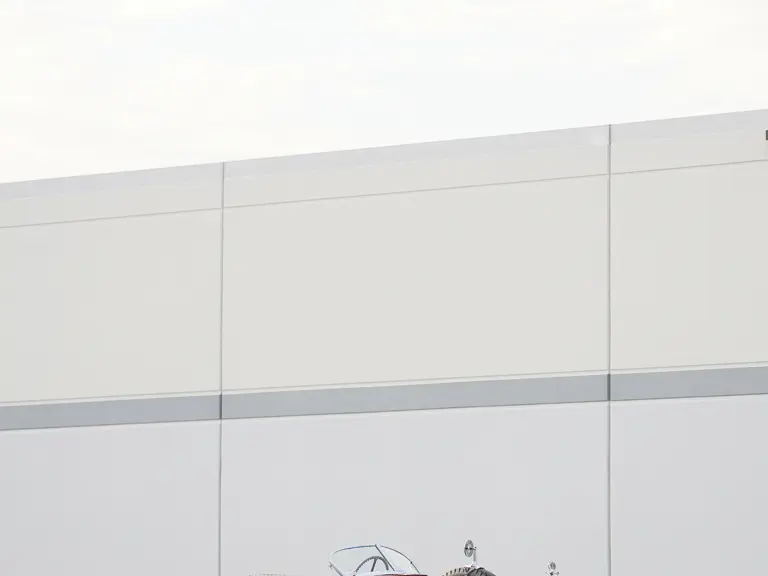

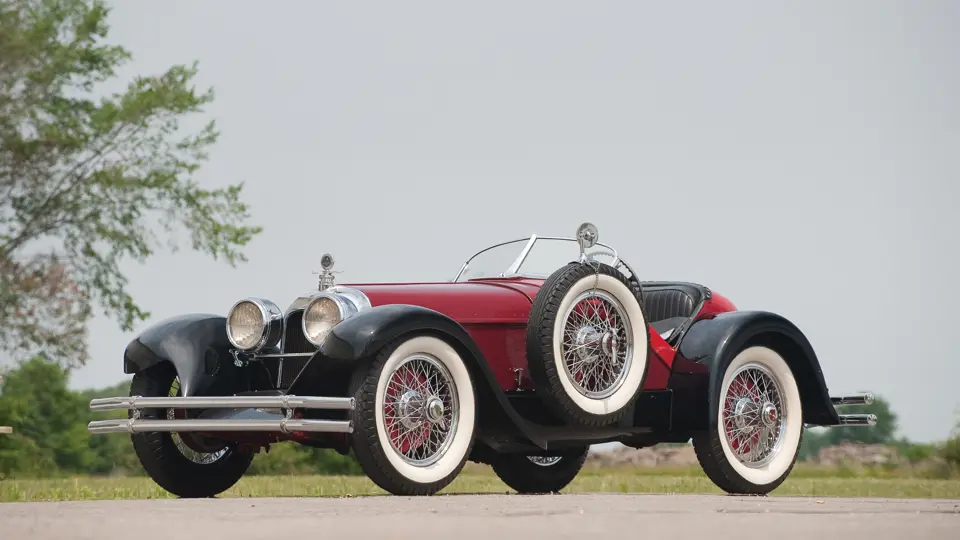
 | Plymouth, Michigan
| Plymouth, Michigan
